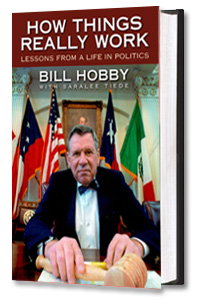A census seems pretty simple. Just count the people. Then decide how many votes each state gets in Congress and for President. Then divvy up a few hundred million dollars and go on about your business.
But often in history, it seems to be more complicated than that. Jesus was born during a census in Bethlehem and crazy King Herod tried to murder all the boy babies born that day. President George Washington’s first veto (1790) was of a bill apportioning Congressional seats among the thirteen states.
Congress apparently has just discovered that the Census Bureau will soon count us for the fifty-first time. So Congress has declared the census an emergency, to be paid for off budget (with funny money). Veterans’ Hospitals are another such unforeseen emergency.
Wisconsin may have exported a Congressman because it has exported 3,700 (soon to be 10,000) inmates to other states. So Governor Thomas Thompson has had a bill introduced in Congress to count the inmates as if they were still in Wisconsin. Governor Thompson has not said which of the inmates is the mystery Congressman.
Should Americans living overseas be counted? If so, how and where, and for what purpose?
Such are a few of the issues surrounding the 2000 census.
All these issues are analyzed in “Who Counts?”, a book invaluable to anyone interested in the politics of the census, reapportionment, and redistricting. Those issues will be in the courts throughout the next decade. The redistricting lawsuits will challenge district lines from Congressional seats to commissioner court precincts. (Margo Anderson’s earlier book on the census was cited in Supreme Court opinions on both sides of the issue earlier this year.)
The most contentious census issue before Congress is the use of a sampling technique for apportionment purposes. The issue burst into the national news in the summer of 1947 when Republicans in the U.S House of Representatives amended a bill providing flood relief in the Dakotas to prevent sampling. President Clinton vetoed the bill.
Advocates of sampling argue that it will reduce the undercount of minorities, an increasingly pernicious legal problem because of its implications for civil rights and federal aid. Congress has authorized sampling for the distribution of federal aid to the states but not for apportionment.
Opponents of sampling argue that is an unscientific technique that it will allow the Census Bureau discretion to manipulate the numbers in favor of Democrats. (One of the authors’ best contributions to the debate is a list of myths put forward by sampling opponents.)
So there may be two sets of numbers– one for reapportionment, another for federal aid and perhaps for redistricting.
Reapportionment is one thing. Redistricting is another. Congress reapportions. Legislatures redistrict. Which figures will legislatures use to redistrict? The Census Bureau sensibly wants to produce a single set of numbers, and that is the recommendation of Anderson and Fienberg.
Census issues have been much litigated during the past decade. The result is a superb legal and historical record of the various disputes and the arguments put forth by each side and the actions taken by the various players: President Clinton, members of Congress, the Secretary of Commerce, Census Bureau officials, state and local government officials, and federal judges.
“Who Counts?” makes that record readily accessible. It will become the handbook for those issues.
(A more fully sourced version is at www.swt.edu/hobby. Hobby can be reached at [email protected] or PO326, Houston, TX 77006-0326.)

